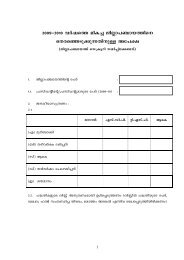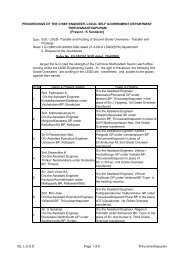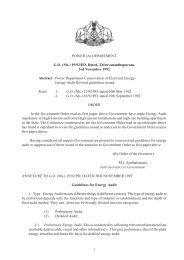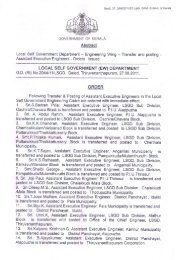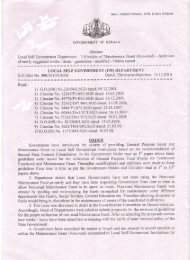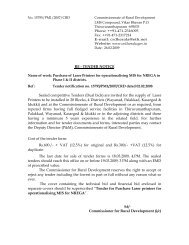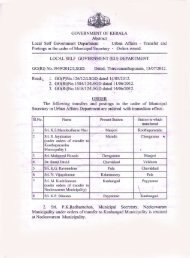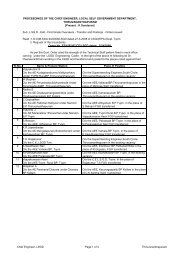Chapter 2 - Kerala Govt Logo
Chapter 2 - Kerala Govt Logo
Chapter 2 - Kerala Govt Logo
- No tags were found...
Create successful ePaper yourself
Turn your PDF publications into a flip-book with our unique Google optimized e-Paper software.
<strong>Chapter</strong> 2Policy, Legislation and Regulationcrop/area/target group specific interventions, formulated in an inter-active mode andimplemented in a spirit of partnership with the States.2.2.1.5. National Environmental Policy 2006The National Environment Policy is intended to be a guide to action: in regulatory reform,programmes and projects for environmental conservation; and review and enactment oflegislation, by agencies of the Central, State, and Local Governments.The policy also seeks to stimulate partnerships of different stakeholders, i.e. public agencies,local communities, academic and scientific institutions, the investment community, andinternational development partners, in harnessing their respective resources and strengths forenvironmental management. The dominant theme of this policy is that while conservation ofenvironmental resources is necessary to secure livelihoods and well-being of all, the mostsecure basis for conservation is to ensure that people dependent on particular resources obtainbetter livelihoods from the fact of conservation, than from degradation of the resource.The principal Objectives of this policy are enumerated below.i. Conservation of Critical Environmental Resources: To protect and conserve critical ecologicalsystems and resources, and invaluable natural and man-made heritage, which are essential forlife support, livelihoods, economic growth, and a broad conception of human well-being.ii. Intra-generational Equity: Livelihood Security for the Poor: To ensure equitable access toenvironmental resources and quality for all sections of society, and in particular, to ensurethat poor communities, which are most dependent on environmental resources for theirlivelihoods, are assured secure access to these resources.iii. Inter-generational Equity: To ensure judicious use of environmental resources to meet theneeds and aspirations of the present and future generations.iv. Integration of Environmental Concerns in Economic and Social Development: To integrateenvironmental concerns into policies, plans, programmes, and projects for economic and socialdevelopment.v. Efficiency in Environmental Resource Use: To ensureThe policy statement is too generic.efficient use of environmental resources in the senseIt also fails to address the currentof reduction in their use per unit of economic output, focus on issues of climate change andto minimize adverse environmental impacts.global warming and their implicationsvi. Environmental Governance: To apply the principles on production sector. However, itof good governance (transparency, rationality, strengthen the relevance of ESMF asaccountability, reduction in time and costs, the regulatory frameworks are mostlyparticipation, and regulatory independence) to the linked to this policy statementsmanagement and regulation of use of environmental resources.vii. Enhancement of Resources for Environmental Conservation: To ensure higher resourceflows, comprising finance, technology, management skills, traditional knowledge, and socialcapital, for environmental conservation through mutually beneficial multi-stakeholderpartnerships between local communities, public agencies, the academic and researchcommunity, investors, and multilateral and bilateral development partners.




